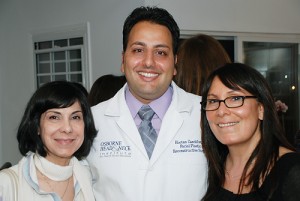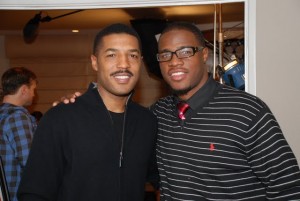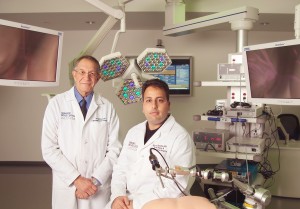- Hereditary Hemorrhagic Telangiectasia - May 25, 2016
- Hereditary Hemorrhagic Telangiectasia: Septal Perforation and Nose Bleeds - May 23, 2016
- Hereditary Hemorrhagic Telangiectasia: Epistaxis and Septal Perforation - May 18, 2016
- Wegener’s Granulomatosis: Autoimmune Disease and Multi-Focal Septal Perforation - May 9, 2016
- Kyle Korver: Facial Injury and Nasal Fracture - March 24, 2015
- Russell Westbrook: Facial Injury and Surgery - March 5, 2015
- Mega-perforation: Pushing the Limits of Septal Perforation Repair - November 26, 2014
- Septoplasty Complication and Septal Perforation - November 24, 2014
- Nose Picking (Rhinotillexis) and Septal Perforations: Why I should stop picking my nose…? - November 24, 2014
- Nasal Fractures, Septal Hematoma, and Septal Perforation: Simultaneous Rhinoplasty and Septal Perforation Repair - October 1, 2014
What are my treatment options for a cheek fracture?
Question: A few days ago I was playing soccer with my friends and was accidentally kicked in the face. I went to see my doctor and he said that I most likely had a zygoma (cheekbone fracture) but that it would heal on its own. My face is still swollen and bruised but I am concerned because I have heard of people fracturing their cheekbones and being left with less than ideal cosmetic results. What are my treatment options to maximize proper healing?
Discussion:
The treatment of a cheek fracture is dependent on the extent of the damage to the underlying structures and their resulting movement from their original locations. The “cheekbone” is in actuality a term that represents a region of the face that is comprised of several bones. These individual bones can be fractured in different combinations when one experiences a “cheek fracture”. In the majority of cases, bones can be repositioned into their original configuration and fixed into place while healing occurs. This is accomplished through small incisions made in the mouth and brow, or near the temple. Very small hardware is then put into place under the skin to hold the bone fragments in place while healing occurs. In other cases, bones may be fractured but there has been no dislocation or movement of the fragments. In these cases little intervention is required but care must be taken by the patient to follow physician recommendations so as to not inadvertently displace the fragments during healing. Finally, in cases where trauma is severe and has endangered vital or specialized systems such as the eye, more advanced surgical intervention may be required. In all cases prompt evaluation by a facial trauma specialist is recommended.
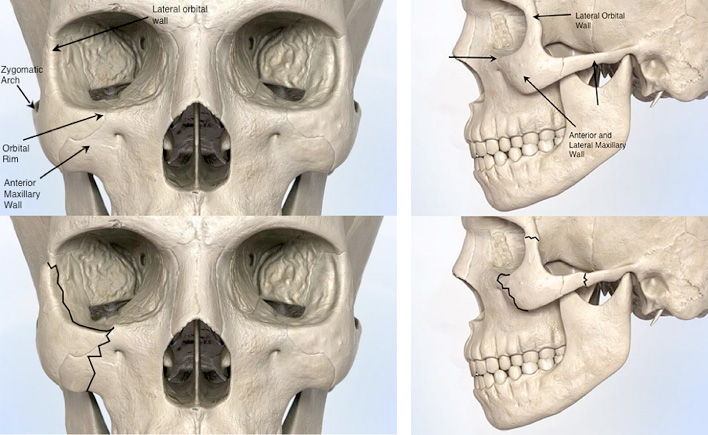
Physical Exam and Treatment
During an evaluation by a facial trauma and sports injury specialist, your face is examined for fractures and damage to vital structures. These specially trained physicians can address possible functional and cosmetic complications that may appear down the road before bone healing has actually begun. Usually, a CT scan is ordered to evaluate for damage that is not readily evident. Facial trauma or disfigurement is oftentimes camouflaged for up to two weeks by the effects of swelling. Occasionally, people who suffer trauma to the cheek will allow it to go unevaluated and heal on its own because they have not realized the true extent of the underlying damage because of prolonged swelling that hide the true nature of the injury. Poor cosmetic results are typically the result of untreated injuries. Early evaluation and treatment is critical to ensuring the best cosmetic and functional results.
Physicians at the Osborne Head and Neck Institute’s Facial Reconstructive Surgery Division specialize in facial trauma and facial sports injury. They are nationally renowned for the expertise in facial injury. The physicians hold dual certification in both otolaryngology/head & neck surgery and plastic & reconstructive surgery. This unique combination of specialties allow for a thorough evaluation and treatment of both functional and cosmetic issues related to facial trauma.
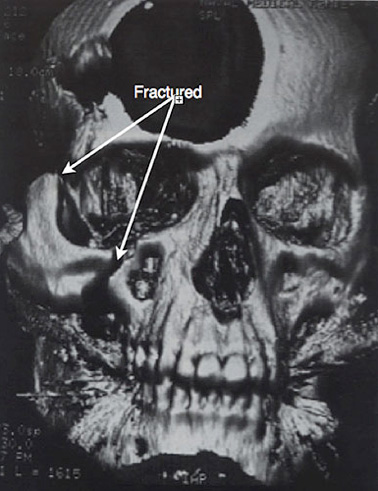
Key Points:
- The treatment of a cheek fracture is dependent on the extent of the damage to the underlying structures and their resulting movement from their original locations.
- In the majority of cases, bones can be repositioned into their original configuration and fixed into place while healing occurs.
- In other cases where the bones have not moved from their original position, little intervention is required as long as their location is preserved.
- In all cases, facial trauma should be evaluated by a physician that specializes in facial trauma or facial sports injury.
For more information or to schedule an appointment on cheek or zygoma fracture treatment options please contact the Osborne Head and Neck Institute.

